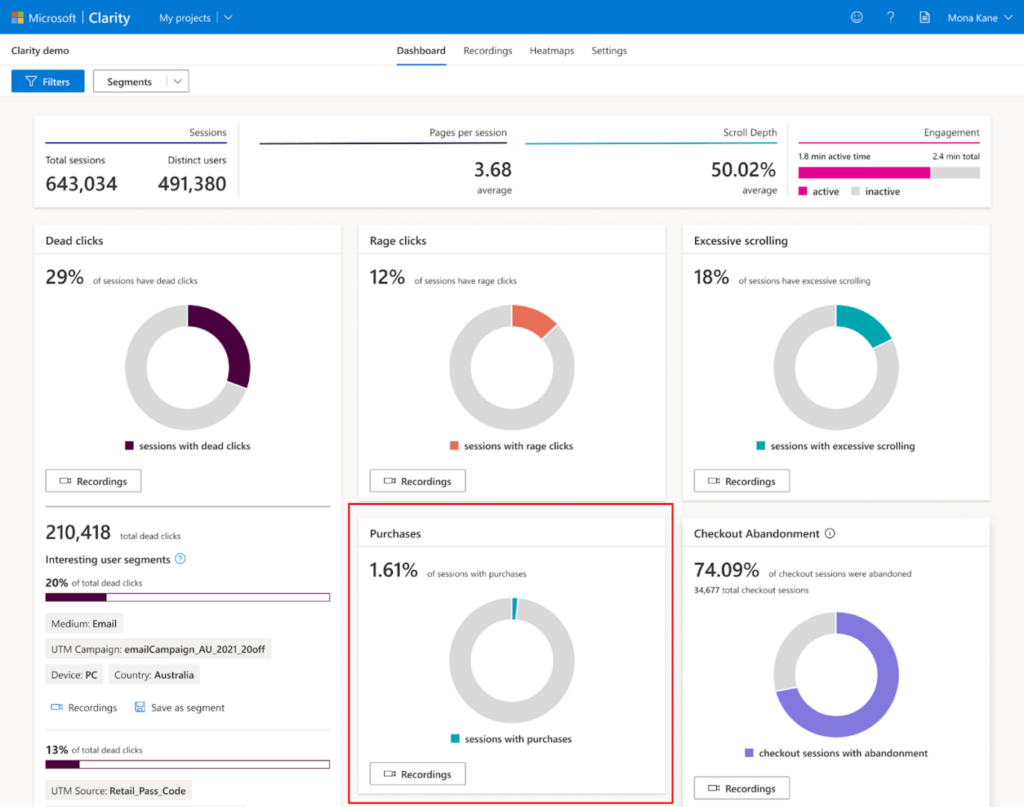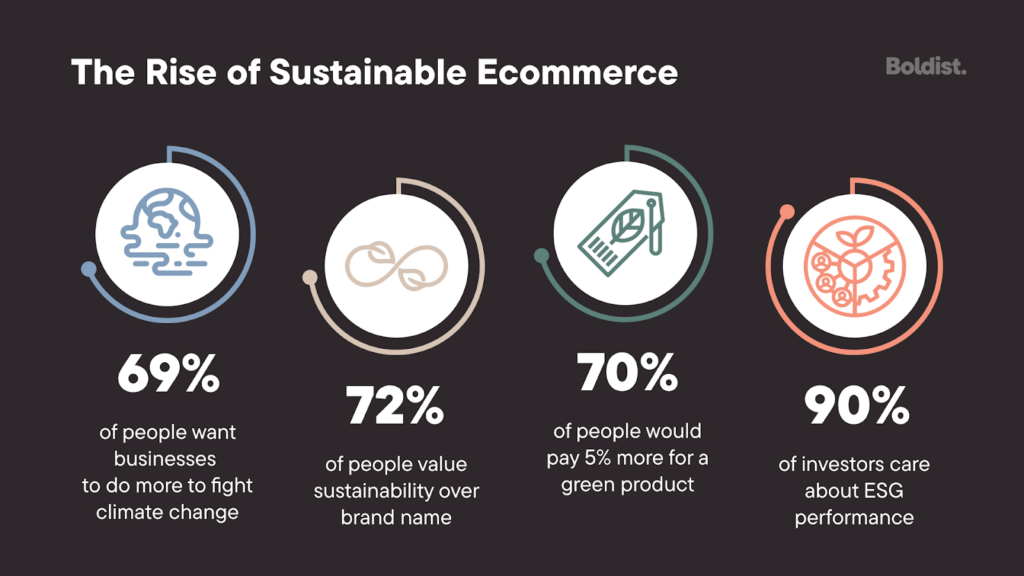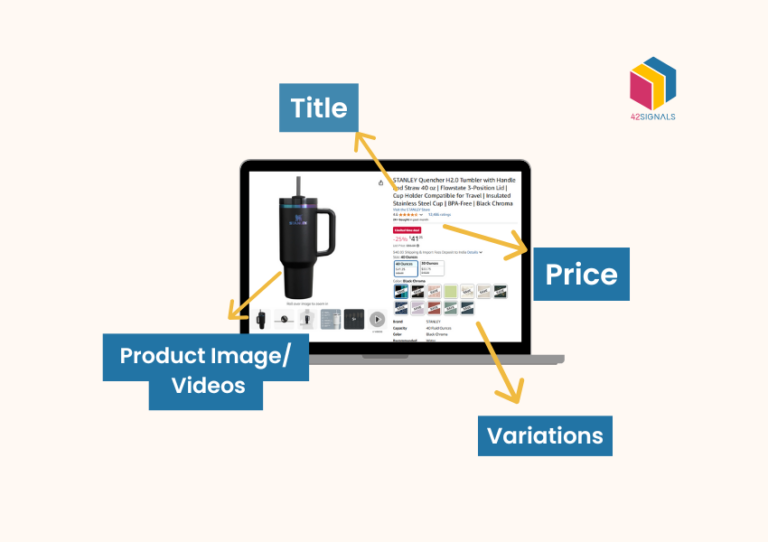The ecommerce landscape is evolving at an unprecedented pace. With emerging technologies, changing consumer preferences, and increasing competition, it can be challenging to keep up with the latest trends, e-commerce insights, and best practices in online retail.
As digital shopping becomes more sophisticated, so do the expectations of consumers. Whether it’s through personalized experiences, seamless mobile interfaces, or sustainable practices, brands must stay ahead of the curve to thrive.
This short read explores the top trends, strategies, and tools you need to succeed as the world continues to evolve.
E-Commerce Insights | Future of Online Retail

Image Source: Microsoft
Trend #1: Personalization and Customer Experience
Offering a personalized experience for your customers is no longer a nice-to-have; it’s a must-have. Consumers expect tailored recommendations, seamless navigation, and relevant content that speaks directly to their needs and interests. As online retail matures, businesses that don’t invest in personalization risk falling behind competitors who create meaningful and dynamic shopping experiences.
To deliver exceptional customer experiences, consider implementing these tactics:
- E-commerce insights powered by data analytics and AI help to segment your audience, track user behavior, and create targeted campaigns that resonate with each group. This not only improves engagement rates but also boosts conversion rates and customer retention.
- Utilize customer reviews and social listening to improve offerings and shopping experiences that increase consumer satisfaction levels. Insights drawn from real customer feedback offer an authentic lens through which brands can evolve their strategies.
- Implement personalized product recommendations based on purchase history, browsing patterns, and search queries. Machine learning tools can predict what users are most likely to buy next, creating upsell and cross-sell opportunities.
- Offer multiple payment options, streamlined checkout processes, and intuitive site search functionality to reduce friction points and improve overall usability. Small improvements in these areas can have a significant impact on the customer journey.
- Leverage social media and email marketing to engage with customers, promote brand awareness, and drive conversions. Personalized email campaigns with targeted promotions or cart reminders often result in higher ROI than general newsletters.

Image Source: TASIL
Trend #2: Mobile Optimization and Voice Search

Image Source: Setupad.com
Mobile devices have become the primary way consumers interact with online stores. Whether they’re browsing during a commute, comparing prices in-store, or making impulse buys late at night, mobile shopping is more relevant than ever. In fact, studies show that over 70% of e-commerce traffic now comes from mobile devices.
Ensure your platform is optimized for mobile, providing a responsive design, fast load times, and easy-to-use interfaces. Additionally, voice search technology is rapidly gaining popularity, especially among younger generations. Smart assistants like Alexa, Siri, and Google Assistant are becoming trusted shopping companions.
Prepare your store by:
- Optimizing product titles, descriptions, and meta tags for voice searches using natural language and long-tail keywords. With e-commerce insights, brands can understand exactly what works and what doesn’t.
- Integrating voice search functionality into your website or app to cater to hands-free shoppers. This can also improve accessibility, making your brand more inclusive to a broader audience.
- Ensuring a seamless checkout process, as voice search users tend to have higher cart abandonment rates due to a lack of visual cues. Consider offering quick payment solutions like Apple Pay or one-click checkouts.
Consumers want speed, convenience, and minimal effort—mobile and voice search optimization caters directly to those desires.
Trend #3: Sustainable Practices and Social Responsibility

Image Source: Boldist
Consumers are becoming more environmentally conscious, expecting brands to prioritize sustainability and ethical business practices. Today’s shoppers, particularly Millennials and Gen Z, are aligning their purchasing decisions with their values. E-Commerce insights can help understand what’s working and what’s not with a few key metrics.
Demonstrate your commitment to green initiatives and social responsibility by:
- Using eco-friendly packaging materials and suppliers that adhere to environmental standards. Sustainable packaging isn’t just good for the planet—it can also reduce costs and improve brand perception.
- Offering transparent information about supply chain management, production processes, and fair labor practices. Consumers are increasingly demanding this transparency, and businesses that can provide it build stronger trust.
- Partnering with charities or organizations that align with your brand values, fostering positive relationships with customers, and contributing to a greater good. Social impact partnerships can also lead to increased brand loyalty and advocacy.
Highlighting these efforts on your product pages, about section, or during checkout can influence buyer decisions and differentiate your brand in a saturated market.
Trend #4: Augmented Reality (AR) and Virtual Try-On
AR technology allows customers to virtually try on products, see how they fit, and visualize items in their own spaces before making a purchase. What once seemed like a novelty has now become an essential component of online shopping for industries like fashion, home decor, and beauty.
Embrace AR and virtual try-on features to enhance the online shopping experience, increase conversions, and reduce returns. Consider integrating:
- Interactive 360-degree views of products, allowing customers to inspect details from all angles. This builds confidence in the quality and suitability of products.
- Virtual dressing rooms or “try-before-you-buy” features let shoppers see themselves in clothing or accessories without physically trying them on. This innovation has helped many fashion retailers reduce return rates and improve customer satisfaction.
- AR-powered product demonstrations showcase how items work, helping customers understand complex products or envision them in real-life scenarios. This is particularly effective for furniture, electronics, and beauty products.
AR not only entertains—it empowers users to make better decisions, ultimately enhancing brand loyalty and satisfaction.
Strategies for Success: E-Commerce Insights
To stay competitive in this ever-changing environment, businesses must focus on strategic execution alongside technological innovation. Here are key strategies to elevate your ecommerce brand:
Stay Agile and Adaptive
Regularly update your knowledge of emerging tech, consumer trends, and market fluctuations to ensure your ecommerce strategy remains relevant and effective. Flexibility is key to long-term success.
Prioritize User Experience with E-Commerce Insights
Continuously gather feedback, analyze user behavior, and optimize your platform to address pain points and improve overall UX. A smooth user experience keeps shoppers coming back.
Build a Strong Brand Identity
Develop a unique voice, maintain consistent messaging across channels, and cultivate loyalty through authentic storytelling and customer engagement. A clear brand identity stands out in a crowded market.
Leverage Data Analytics and E-Commerce Insights
Monitor key performance indicators, track user interactions, and use data-driven insights to inform decision-making and fuel growth. Make your metrics work for you by turning them into actionable strategies.
Foster Collaborative Partnerships
Forge strategic alliances with complementary businesses, influencers, and industry leaders to expand reach, build credibility, and generate new opportunities. Collaboration often leads to innovation and access to new customer bases.
42Signals helps e-commerce brands understand their online marketplace performance. We provide detailed insights into product performances, category overviews, and competitor data. Whether you’re scaling a startup or optimizing an established brand, our tools give you the edge you need in the digital arena.
Sign up for a free trial today.
Frequently Asked Questions
What are the 5 C’s of e-commerce?
The 5 C’s of e-commerce represent five foundational elements that contribute to a successful online business:
- Content – Engaging product pages, blogs, videos, and other media that educate and convert.
- Commerce – The transaction layer: secure payments, inventory, checkout flow, and fulfillment.
- Community – Building brand loyalty and engagement through social proof, reviews, and user interaction.
- Convenience – Making it easy for customers to find, buy, and receive products, mobile-optimized and user-friendly.
- Conversion – Optimizing the entire funnel to turn visitors into paying customers efficiently.
Together, these 5 C’s provide a framework for building a customer-centric e-commerce experience.
What is e-commerce analytics?
E-commerce analytics is the process of collecting, interpreting, and acting on data from your online store to improve performance, conversions, and profitability.
It includes insights across:
- Website traffic and source attribution
- Customer behavior and funnel analysis
- Sales performance by product or category
- Marketing ROI (ads, email, social)
- Cart abandonment and retention trends
Tools like Google Analytics, Shopify Analytics, and 42Signals help businesses track and optimize e-commerce metrics in real time.
What are the 3 C’s of e-commerce?
The 3 C’s of e-commerce are a simplified model focusing on the core drivers of online success:
- Content – What you say and show (product details, visuals, brand messaging)
- Commerce – How you sell and deliver (platform, payment, logistics)
- Community – Who you sell to and how you build trust (customers, reviews, influencers)
These pillars help brands align their message, method, and market for stronger digital growth.
What are the major trends of e-commerce insights?
The e-commerce landscape is evolving rapidly. Major trends in 2024–2025 include:
- Mobile-first shopping – Consumers are increasingly buying via smartphones, making mobile UX critical.
- AI-powered personalization – Dynamic product recommendations and search tailored to user behavior.
- Omnichannel retail – Seamless experiences across online stores, marketplaces, apps, and physical locations.
- Sustainability & conscious commerce – Shoppers prefer eco-friendly brands and transparent sourcing.
- Faster, flexible fulfillment – Same-day delivery, click-and-collect, and real-time inventory tracking.
- Chatbots & conversational commerce – Customer service and sales support via AI-driven chat tools.
Staying ahead of these trends helps e-commerce brands adapt faster, serve better, and scale smarter.







